As the year draws to a close and the first few frosty nights roll in, many gardening tasks are being finished up and our sights turn to next year’s preparations. For carnivorous plants the winter tasks have only just begun as we look at cutting back, dividing, potting and propagating.
What are carnivorous plants?
Carnivorous plants are a group of plants which can attract, capture and digest prey-typically insects. They are able to do this through various trapping mechanisms including snap traps, pitfall traps and sticky leaves. Carnivorous plants are found worldwide in every continent except Antarctica and include many genus and around 800 species. The UK is home to 13 native carnivorous plant species.
Carnivorous plants over winter
Temperate carnivorous plants are very similar to your typical herbaceous perennials. As temperate species die back, they lose most if not all of their leaves and remain dormant as either a rhizome or hibernacula until spring. It is this time of year that the plants will need cutting back and tidying of any of the dead/dying traps. This includes the commonly kept Dionaea muscipula (Venus flytrap), drosera (sundew), sarracenia (North American pitcher plant) which are perfect for unheated greenhouses and outside within the UK year round.
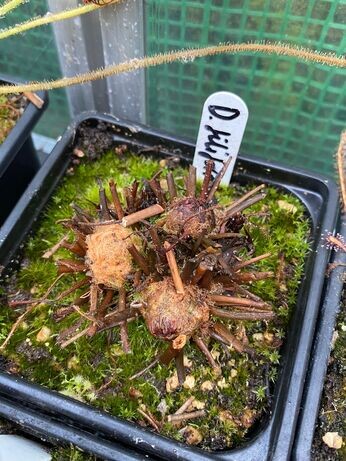
Although most sarracenia will be able to be completely cut back in the late winter months, the species Sarracenia leucophylla can be one exemption as its newest beautiful white pitchers are triggered by cooler weather, meaning most are only a few weeks old and can hold throughout the winter. During dormancy, sarracenia may also produce a flat non-carnivorous leaf known as a phyllodia which allows the plant to photosynthesis over winter.
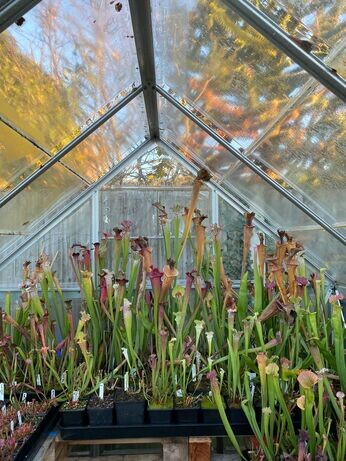
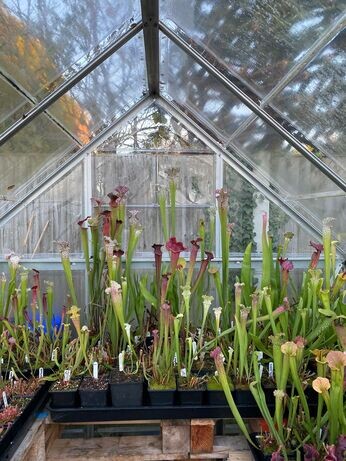
Propagation
Once all the plants are cut back for winter, you can look at dividing and repotting. It is better to do this during the winter when the plants are fully dormant so not to disturb the roots during the active growing season. Dividing is also easier in winter as there is less foliage to get in the way and it is easier to identify individual rhizomes/hibernacula. This is also a great way to determine your plants health by looking for white/pink rhizomes and green/fuzzy hibernacula.
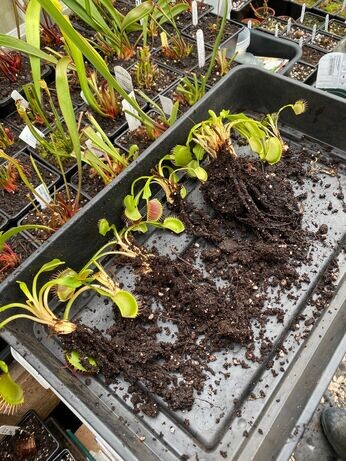
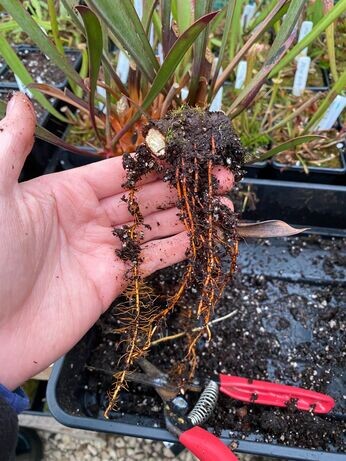
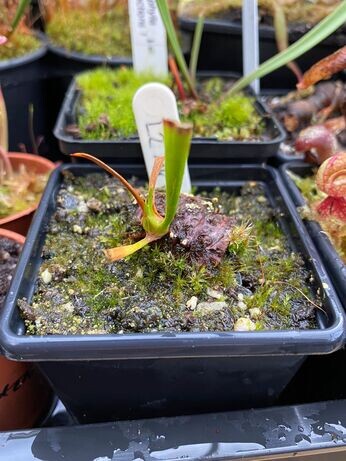
Rhizome cuttings are a great way to get mature plants quicker than growing from seed which can easily be done when you’re repotting your plants. This is most commonly done on sarracenia, although it can also be applied to venus flytraps.
When selecting a plant for rhizome cuttings, you ideally want a mature plant with a long rhizome to take a decent sized cutting from. Cut about an inch off the back end of the rhizome which will often have roots attached. Plant up the cut rhizome in a pot of carnivorous plant soil mix with the rhizome just resting on the soil surface and the roots buried. You can keep these in an unheated greenhouse and expect to see new shoots the following spring.
Peat free
Peat free is a highlighted subject this year with the upcoming peat ban and there has been many queries surrounding carnivorous plants due to them being grown in peat in cultivation as they naturally inhabit peat bogs and fens in their native habitats. Sphagnum moss is a great alternative, which can be used live or dried and mixed with perlite or sand. This is a great mix for all of your commonly kept carnivorous plants.
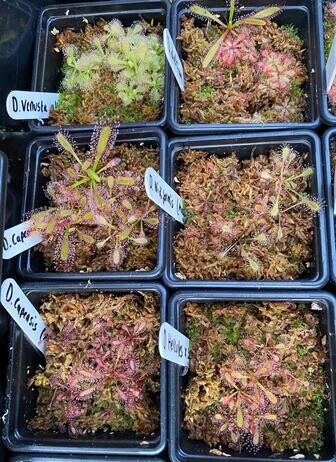
Written by production assistant Megan

![]()
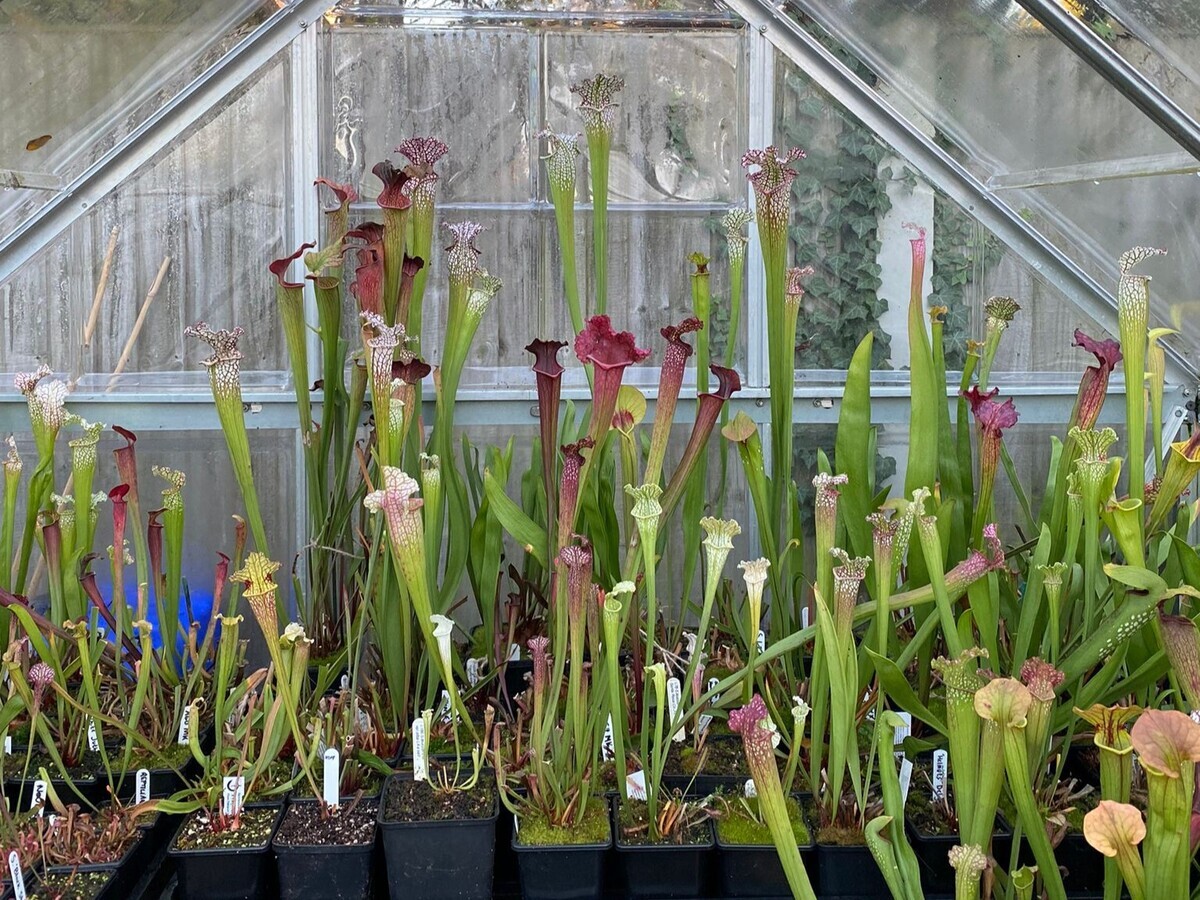


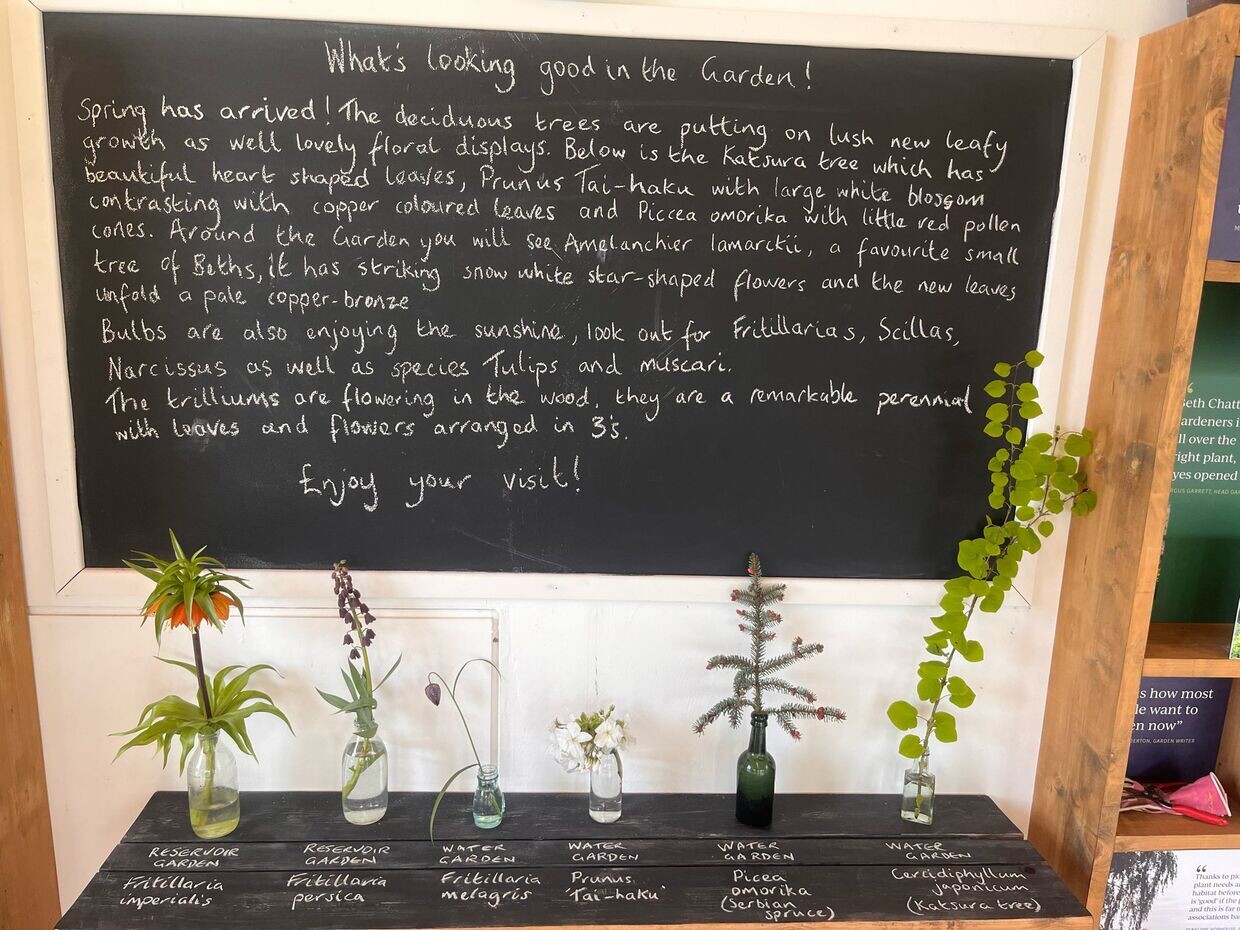
Comments